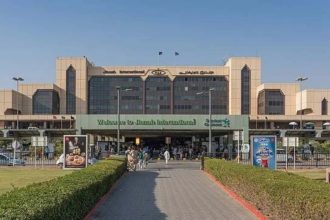The Assad family’s governance in Syria, spanning over five decades, has come to an abrupt end. Today, insurgent forces have overtaken Damascus, the nation’s capital, leading to President Bashar al-Assad‘s flight and effectively concluding the dynasty’s reign.
For years, the Alawite-led dynasty maintained control over a predominantly Sunni populace, beginning with Hafez al-Assad’s rise to power through a coup on November 13, 1970. This era, characterized by political upheaval and frequent coups post-independence, saw Hafez, from the Alawite minority, ascend from Syrian Air Force commander to the head of state, establishing a network of loyalty within the military and the Ba’ath Party.
Hafez utilized divide-and-rule strategies, exploiting the country’s ethnic and religious divisions, thereby centralizing his power and creating a fragile state infrastructure. He strategically placed Alawites, a historically marginalized group, in influential military and governmental positions while manipulating sectarian and tribal lines to mitigate threats and consolidate his rule.
The Alawite Ascendancy and Ba’ath Party Influence
Post-1946 independence, the Alawites, constituting about 12-15% of the pre-war population, became a significant political and military force, bolstering the secular, inclusive Ba’ath Party founded in 1947. This contrasted with the Sunni-dominated Muslim Brotherhood, promoting Arab nationalism and secularism.
The intention was for Hafez’s legacy to continue through his eldest son, Bassel. Still, his sudden death in 1994 led to Bashar, an inexperienced ophthalmologist, inheriting the presidency in 2000, confirmed by a referendum securing 97% of the vote. Initially, Bashar’s rule brought hopes of reform, but these quickly faded as he retained his father’s authoritarian system and advisers.
Economic Challenges and Governance Under Bashar
Unlike his father’s, Bashar’s rule involved replacing old guards with his urban elite allies, lacking grassroots support and alienating rural populations. His tenure saw significant economic mismanagement, with GDP growth benefiting a narrow elite and exacerbating inequality, poverty, and corruption. A severe drought and poor resource management pushed many rural Syrians into cities, further straining societal divides.
Read: Mohammed Al-Jolani’s Rise Syria’s Rebel Victory
The governance model under Bashar, designed to be coup-proof, maintained power through a complex system of overlapping security agencies and patronage, keeping Syria a de facto dictatorship despite superficial democratic processes.
The Arab Spring and Syria’s Civil War
The 2011 uprising, part of the Arab Spring, escalated from peaceful protests to a devastating civil war, marking years of brutal crackdowns, significant casualties, and widespread displacement. The recent offensive by Hayat Tahrir al-Sham (HTS), an Islamist group formerly associated with al-Qaeda, signifies a pivotal challenge to Assad’s rule, capturing Damascus and ending over half a century of the Assad family’s control.






